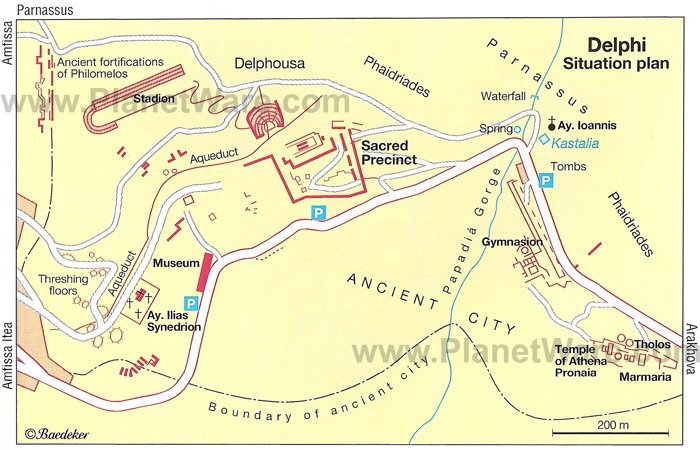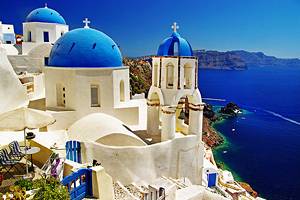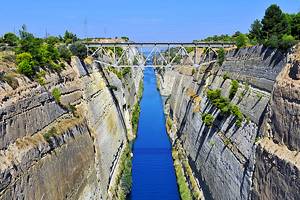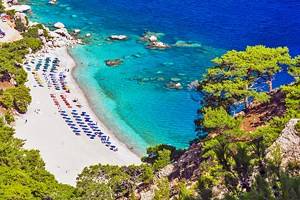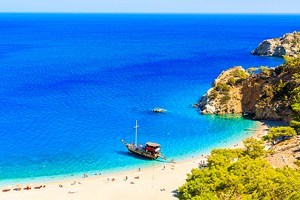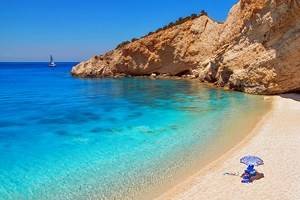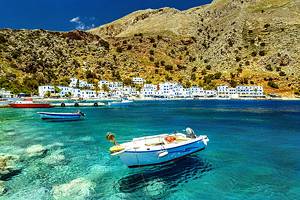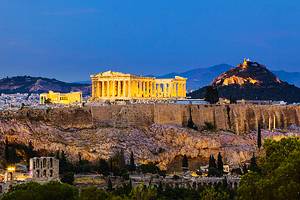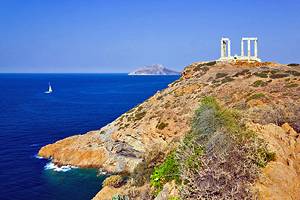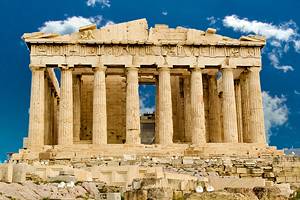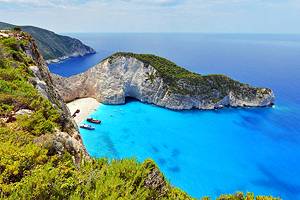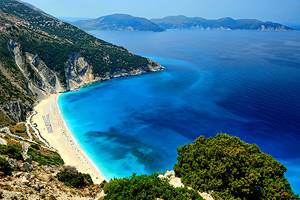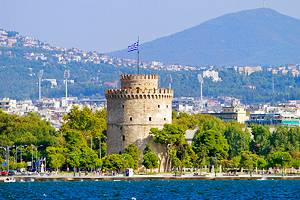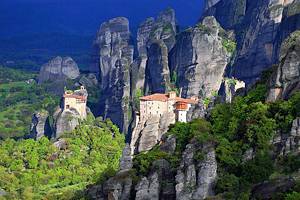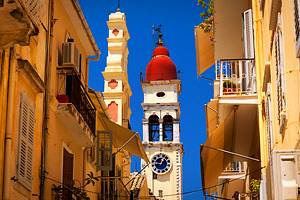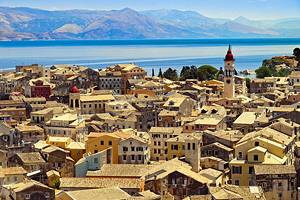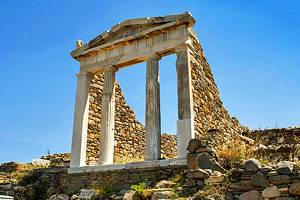Visiting Delphi from Athens: A Complete Guide
Delphi (Delfí), lying on the slopes of Mount Parnassus high above the Gulf of Corinth, is one of the most famous historic sites in Greece, known throughout the ancient Greek world and beyond as the sanctuary of Apollo and the shrine of his oracle.
Today a UNESCO World Heritage Site, Delphi ranks with the Acropolis in Athens; Olympia; and the island of Delos as top tourist attractions of the Classical period of ancient Greece. Its wealth of archaeological treasures combines with its magnificent mountain setting and its importance in Greek mythology to make Delphi one of the most awe-inspiring places to visit in Greece.
Delphi lies 180 kilometers northwest of Athens to which it is connected by a regular bus service. Although there are enough things to do here to justify an overnight excursion, you can easily make Delphi a day trip from Athens. A convenient way to do this is to join a full-day tour to Delphi from Athens that includes direct transportation by bus or van.
Some travelers prefer to stay overnight, either in the little town of Delphi, close to the ruins, or in the mountain village of Arachova, a few kilometers from the ancient site.
The Sacred Way
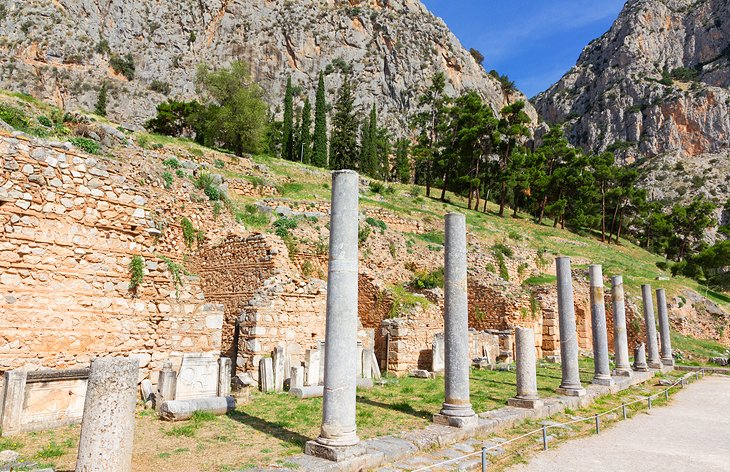
The Sacred Way is the main route through the Sanctuary of Apollo, leading from the gateway uphill 200 meters to the Temple of Apollo. Originally, it was lined with votive monuments and treasuries erected by various Greek cities, reflecting the diversity of the political pattern of ancient Greece. The monuments themselves have disappeared, but many of their bases have survived.
Temple of Apollo
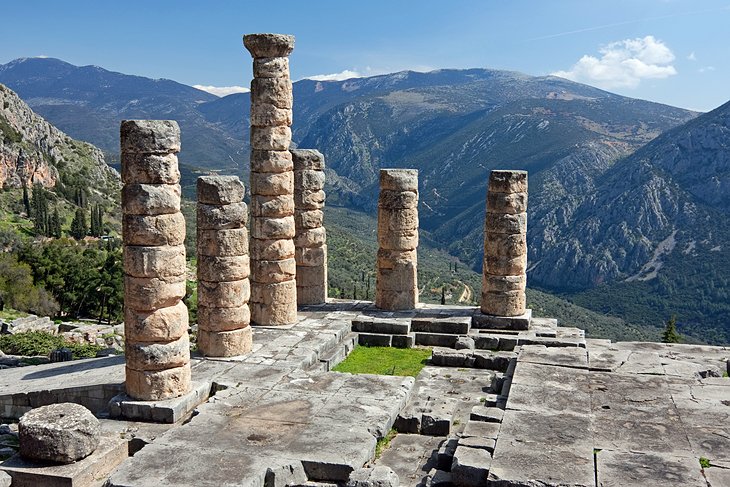
All that remains of the Temple of Apollo, the most important building in the Sanctuary of Apollo, are the foundations. It was built on the same location three times and featured columns, sculptures, and statues inside.
The present Temple of Apollo, built in Doric style in the fourth century BC, preserved the ground-plan of the earlier sixth-century-BC Archaic temple and re-used the old column drums, but the detailing is typical of the late-Classical period.
Within the temple, in the adyton (inner shrine), the Pythia (priestess) would sit and utter the words of the Oracle, sent to her by Apollo and interpreted by the priests.
Polygonal Wall
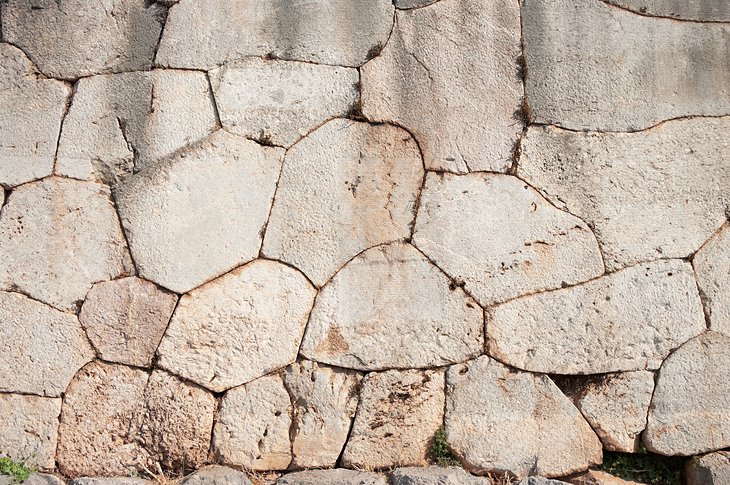
Behind the Sanctuary of Apollo is the sixth-century-BC Polygonal Wall, supporting the platform on which the Temple of Apollo stands. The stones that make up the wall are cut into unusual polygonal shapes (hence the name) and carved with ancient inscriptions. The wall's main face is 90 meters long, and it was originally two meters taller than it is today.
Treasury of the Athenians
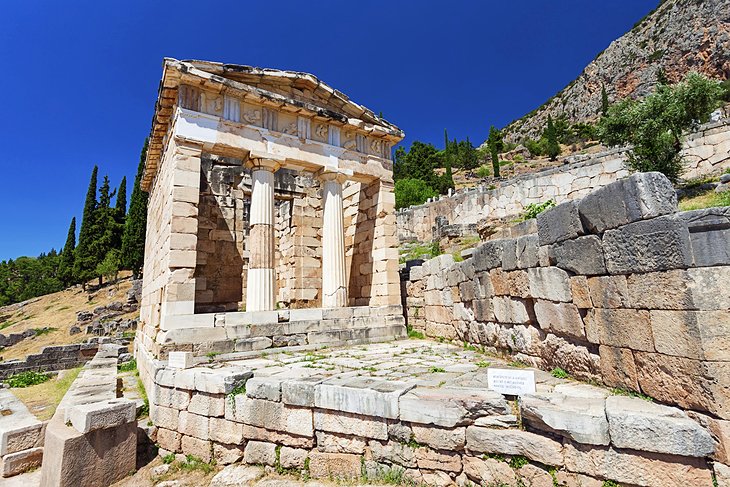
The Treasury of the Athenians (built around 510 BC and re-erected 1903-06) is in the form of a Doric temple. It was built by the Athenians, using marble from the island of Paros, to house their offerings to Apollo. It is decorated with a fine frieze. What you see is a copy; the original is in the Archaeological Museum of Delphi.
Theater
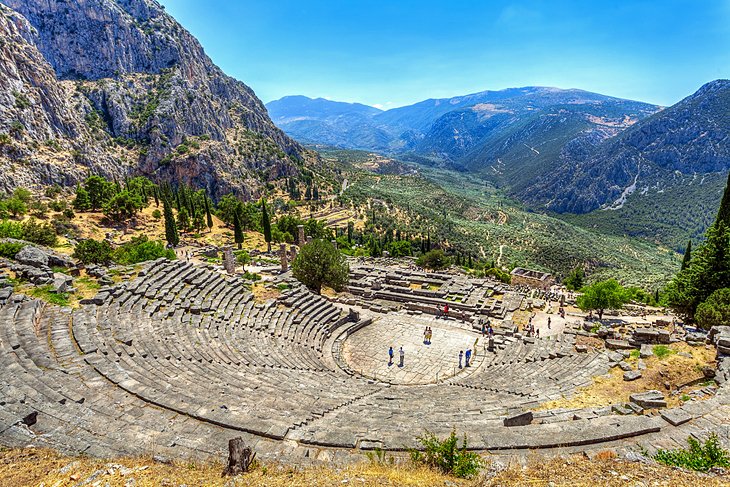
A flight of steps leads up to the theater. Dating from the fourth century BC, with later alterations during the Roman period, the theater could accommodate 5,000 spectators on 35 rows of stone benches. It was built to host musical contests at the Pythian Games, which were held at Delphi from 590 BC onwards. Lying within the sacred precinct, it commands fine views of the entire site.
Stadion
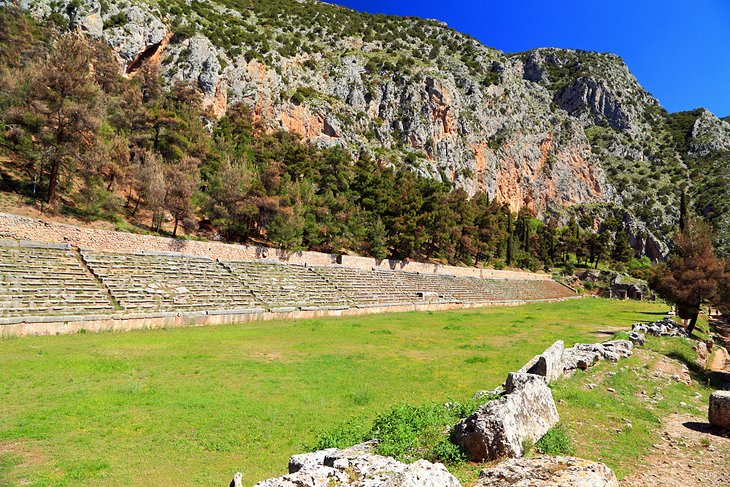
The Stadion, which lies at the highest part of the site, 50 meters above the theater, was built in the fifth century BC but gained its present appearance under the Romans in the second century AD. Its tiered stone seating could accommodate 500 spectators. Like the theater, it was built to host the Pythian Games, staged at Delphi from 590 BC onwards; athletic contests would have been held here.
Castalian Spring
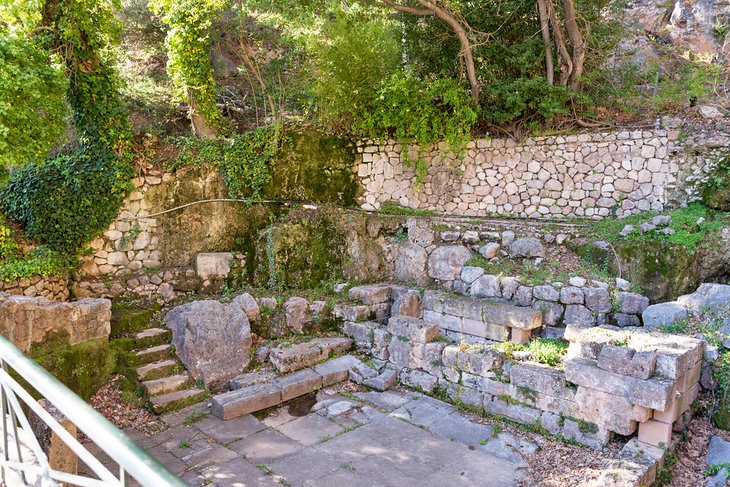
In a rocky gorge to the east of the sacred precinct, you'll find the Castalian Spring and the remains of two monumental fountains, with recesses in the rocks for votive offerings. Here, the Pythia (priestess) washed, as did those wishing to consult the oracle, purifying themselves before making their way to the Temple of Apollo.
The Tholos
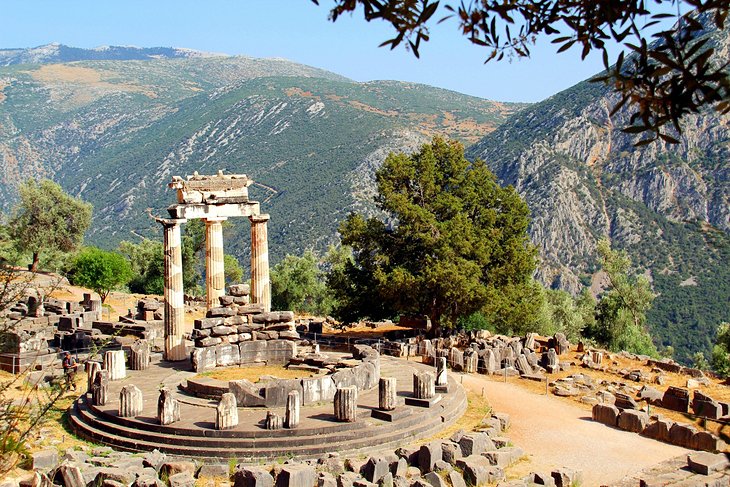
Within the fourth-century-BC Sanctuary of Athena Pronaia, stands the Tholos, based on a circular plan with the remains of 20 Doric columns on the outside and 10 Corinthian columns in the interior. It was built around 380 BC, and though its exact function is unknown, it is regarded as a masterpiece of Classical architecture.
The Tholos is one of the best places to visit at Delphi for a glimpse of the site's evocative and mysterious ambience.
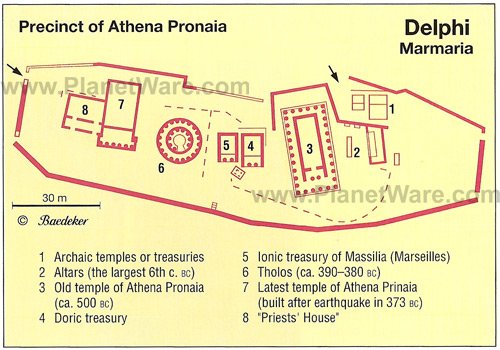
Archaeological Museum of Delphi
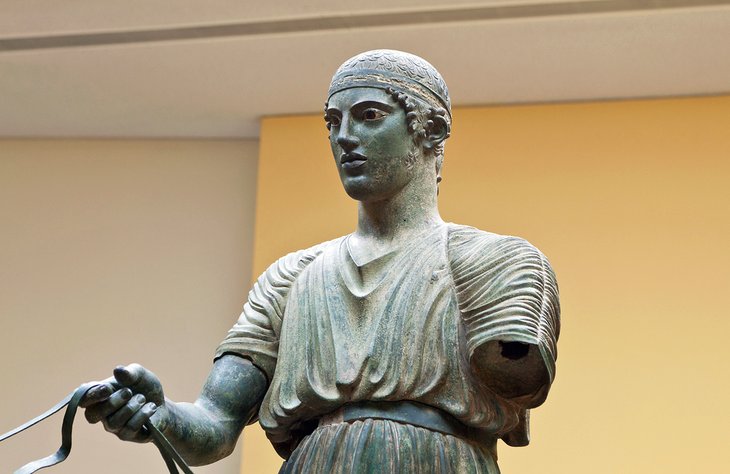
Located between the archaeological ruins and the modern town of Delphi, this superb museum contains one of the most important collections of ancient Greek artworks in the world.
The Archaeological Museum of Delphi displays a fascinating collection of finds from the Delphi archaeological site, including coins, gold jewelry, sculpted architectural elements, friezes, statues, votive offerings, and stele.
Exhibits are displayed in chronological order, representing various time periods from the eighth century BC until Late Antiquity. Among the extensive collection and not to be missed are the Charioteer of Delphi, a fifth-century-BC statue that is considered a masterpiece of art, and the Sphinx of Naxos, which dates to the sixth century BC.
There is also a cafeteria with pleasant outdoor seating, and a gift shop.
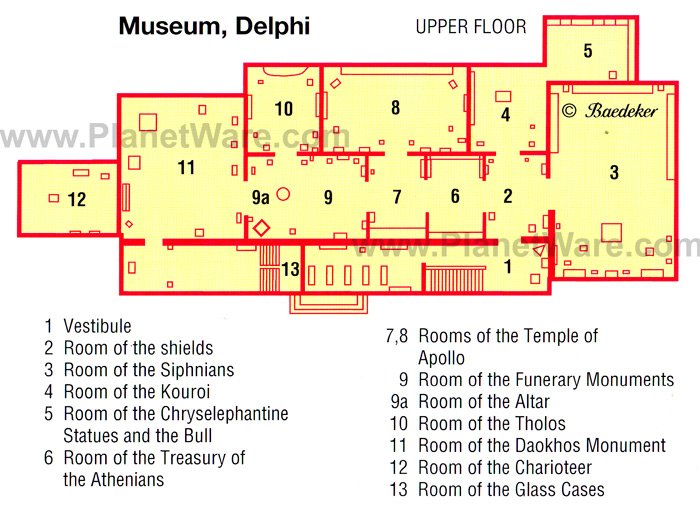
The Modern Town of Delphi
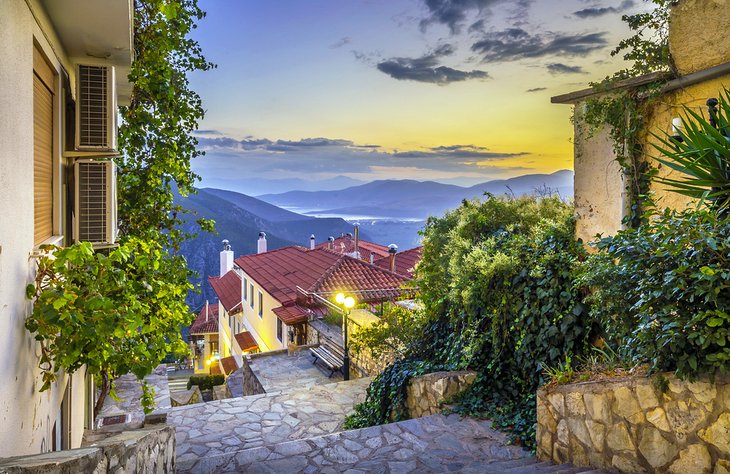
Within walking distance of the archaeological site, the small town of Delphi has many hotels, guesthouses, restaurants, shops, and attractions catering to tourists. It was established in 1892, when the village of Kastrí, which had grown up around the Temple of Apollo archaeological site, was moved to a new position one kilometer west to allow excavation of the ancient site.
Skiing and Outdoor Activities at Mount Parnassus
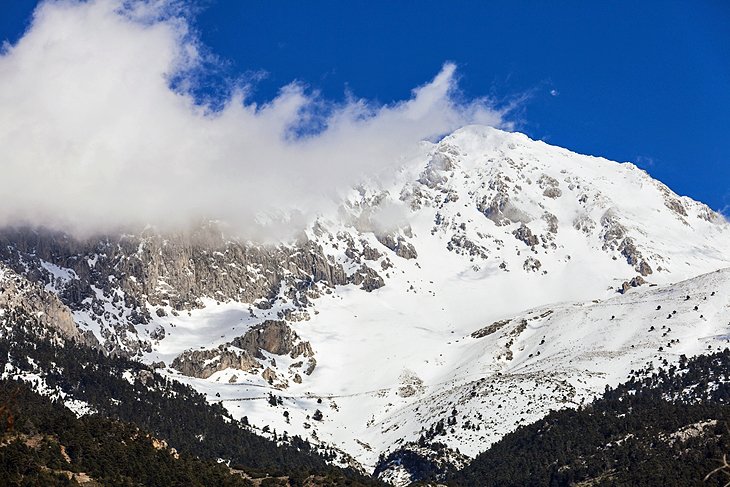
The Delphi area offers plenty of terrain for mountain walks and winter sports, mainly on Mount Parnassus (Parnassos), which rises 2,457 meters, making it one of the highest mountains in Greece. Snow-covered in winter, Parnassus is home to the country's largest alpine ski resort, with 27 kilometers of ski area and 23 ski slopes.
The Mountain Village of Arachova
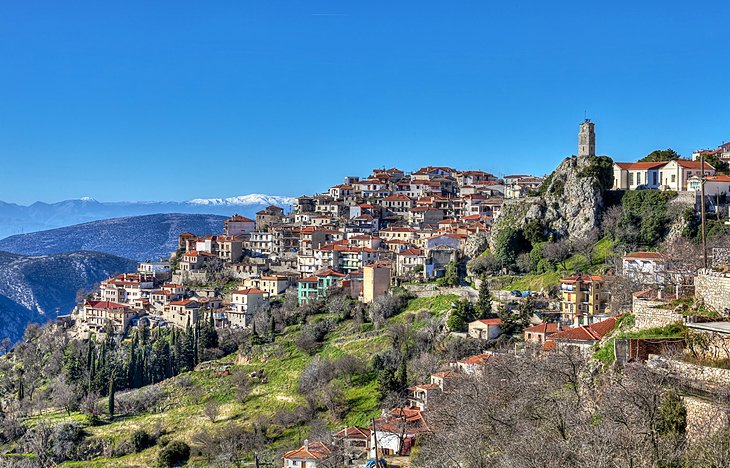
In winter, wealthy Athenians like to visit the mountain village of Arachova, which stands on the north slopes of Mount Parnassus, a few kilometers east of Delphi. Old stone buildings house old-fashioned hotels and guesthouses with traditional decor, and small romantic taverns serve local specialties such as hilopites (a type of pasta) and formaéla (cheese served grilled). The village is known for the fluffy flokati rugs made here, which you'll find in shops all over town.
Getting to Delphi from Athens
- Getting to Delphi on Your Own: The bus from Athens takes about three hours each way; driving takes somewhat less time. There is plenty of overnight accommodation in Delphi and nearby Arachova, which has more character.
- Tours to Delphi from Athens: Enjoy the Greek landscape while someone else drives from Athens to Delphi. Organized day trips, provided by local tour operators, typically include transportation and a guided tour through the archaeological site, as well as a visit to the Archaeological Museum of Delphi and a stop for shopping in the village of Arachova.
- Comfort and Safety: Because visiting Delphi requires a lot of walking on hilly terrain with rough stones underfoot, wear sturdy, comfortable low-heeled shoes. Especially in the summer, when the midday sun is very hot, wear a hat and be sure to carry enough water. You might want to bring a picnic lunch to enjoy in a scenic spot among the ruins.
